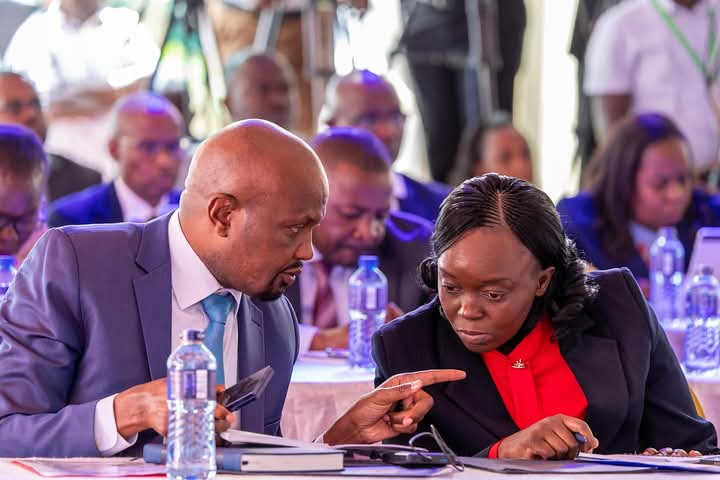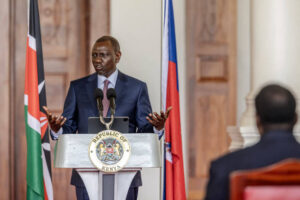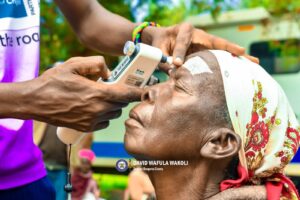

Kenya is bracing for a massive setback in its health sector as it is set to lose Sh30.9 billion in funding following the U.S. government’s decision to suspend global health donor support. The freeze is a direct result of the Trump administration’s move to halt financial aid to international health programs, affecting crucial areas like HIV, tuberculosis, and malaria care. This comes at a time when Kenya’s healthcare system is already grappling with resource constraints, making the funding cut a potential disaster for millions of citizens relying on essential health services.
In response to this grave situation, the Kenyan government has swiftly allocated Sh24.9 billion to ensure that there is no interruption in the provision of medical supplies, particularly for key programs like tuberculosis, malaria, and HIV treatment. Health Cabinet Secretary Barasa announced these measures at a high-level health summit, emphasizing the government’s commitment to maintaining critical healthcare services despite the looming financial shortfall. She reassured the public that the government was working hard to secure the necessary resources to fill the funding gap.During the summit, Barasa warned that the freeze in donor funding would have severe consequences, particularly for the most vulnerable populations in Kenya. She highlighted that without adequate financial support, the country could see an alarming increase in new HIV infections and deaths from tuberculosis.

The situation is especially dire considering that nearly 20,000 of the expected tuberculosis-related deaths could be among individuals already living with HIV, a group that relies heavily on donor funding for treatment and care.Barasa projected that the freeze could result in at least 58,000 new HIV infections by 2030, an outcome that would place additional strain on Kenya’s already overwhelmed healthcare system. Additionally, the reduction in funding could lead to the death of an estimated 23,000 people from tuberculosis, a disease that remains one of the leading causes of death in the country. The loss of $30.9 billion in funding is therefore seen as a critical blow to Kenya’s ongoing battle against these diseases.
The U.S. funding freeze also threatens other vital health programs, including immunization initiatives, blood transfusion services, and vaccine procurement. Barasa expressed concern over the possible suspension of $2.8 billion in global support for Kenya’s blood transfusion program, which is set to end by March 2025. This disruption would severely affect hospitals and healthcare centers across the country, particularly in rural areas where access to safe blood transfusions is already limited.
Immunization programs, which are crucial for the prevention of diseases such as polio and measles, are also at risk. Barasa emphasized that the country requires $11.6 billion to sustain these programs, with the threat of losing crucial support from Gavi, the Global Fund, and the U.S. government. Without this funding, the country could see a rise in vaccine-preventable diseases, further straining the healthcare system.As the situation becomes more dire, Barasa underscored the urgency of diplomatic efforts to secure alternative sources of funding. The Kenyan government is working closely with international partners, including the World Health Organization (WHO) and other donor organizations, to address the shortfall and prevent a public health crisis. In addition to seeking new funding, the government is also reallocating resources within the health sector to cover the most pressing needs.

Despite these efforts, the freeze in U.S. funding has wide-reaching consequences, especially for Kenya’s healthcare workforce. The closure of donor-funded programs could lead to the redundancy of approximately 41,000 staff members working under the President’s Emergency Plan for AIDS Relief (PEPFAR). Barasa called on county governments to retain healthcare workers and ensure that they are absorbed into other areas of the health system to avoid job losses and disruptions in services.The government has also recognized the need for a smooth transition from donor-funded programs to government-supported initiatives. To this end, Barasa has urged counties to set aside funds to help manage the transition process. This includes covering the costs of transitioning healthcare workers and ensuring that critical services, particularly those for HIV, malaria, and tuberculosis patients, continue uninterrupted.The health funding freeze is compounded by existing financial pressures within the health sector, with significant debts owed by both the Ministry of Health and counties.
Barasa revealed that her ministry currently owes KEMSA 1.4 billion shillings, while counties are struggling with a collective debt of 3.5 billion shillings. These outstanding debts further complicate the already challenging financial situation, making it even more critical for the government to find solutions to address both immediate and long-term health financing needs.
Editor’s pick!
Kenya’s health sector is at a crossroads, with the loss of U.S. funding threatening to undo years of progress in fighting HIV, tuberculosis, and malaria. While the government has taken swift action to address the funding gap, the long-term sustainability of these essential health programs will depend on the successful implementation of diplomatic solutions, the allocation of additional resources, and the commitment to retaining a strong healthcare workforce. The country’s ability to navigate this crisis will be a test of its resilience and its capacity to protect the health of its citizens in the face of growing financial pressures.



